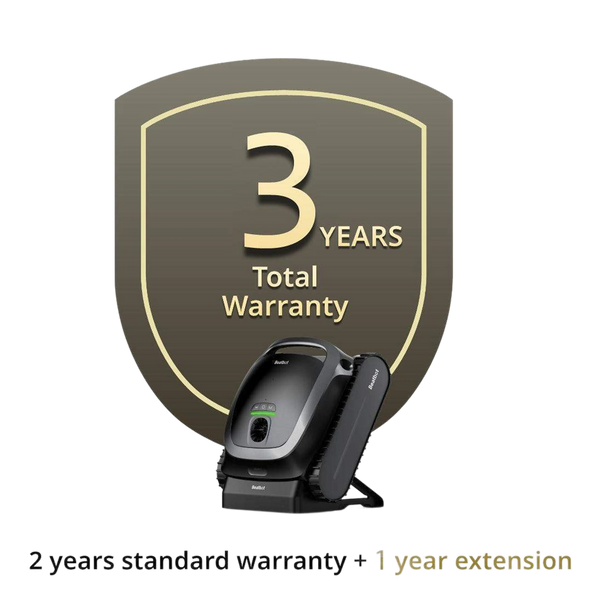9 Steps to Clean Your Salt Water Chlorinator Cell
If you're tired of constantly manually adding chlorine tablets to your pool, a saltwater pool might be just what you're looking for. Unlike traditional chlorine pools, a saltwater pool continuously breaks down salt into chlorine through electrolysis, which not only saves you money on purchasing chemicals but also offers a great self-maintenance process. However, maintaining a clean saltwater pool is of even greater importance compared to other types of pools. In this article, we will discuss how to clean a saltwater pool.
Table of content

Clarification and Re-elucidation: The Importance of Cleaning a Salt Water Cell
Ensuring Efficient Chlorine Production
A clean salt water chlorinator cell can more effectively convert salt into chlorine, ensuring that the pool water is adequately disinfected. This helps prevent the growth of bacteria, viruses, and other harmful microorganisms, maintaining the hygienic standards of pool water.
Extending the Lifespan of the Salt Water Chlorinator Cell
The salt water chlorinator cell can be affected by impurities in the water and mineral deposits, leading to decreased performance. By cleaning it regularly, these can be removed, keeping the salt water chlorinator cell in optimal working condition and reducing the frequency of repairs and replacements. Meanwhile, it can also alleviate the burden of pool skimmers and other pool cleaners.
Reducing Chemical Costs
An efficient salt water chlorinator cell can produce enough chlorine to disinfect the pool water, reducing the dependence on additional chemicals. This means you can decrease the cost of purchasing and using disinfectants, pH adjusters, and other chemicals, while also helping to reduce environmental impact.
Maintaining Good Water Quality
Cleaning the salt water chlorinator cell helps keep the pool water clean and clear. When the salt water chlorinator cell is functioning properly, it can effectively convert salt into chlorine, killing harmful microorganisms and algae in the pool water. This helps prevent the pool water from becoming turbid, foul-smelling, or developing other unpleasant odors, providing a healthier and more comfortable swimming environment.
How Often Should a Saltwater Chlorinator Be Cleaned?
Maintaining your saltwater chlorinator is essential for ensuring your pool stays clean and minimizes inefficiencies. To keep everything running smoothly, follow this simple guide:
Regular Inspections:
- Inspect your chlorinator every two months. Regular checks help catch any issues before they affect your pool's sanitation.
Cleaning Schedule:
- Aim to clean your saltwater chlorinator at least twice a year. However, this isn't a strict rule; your usage and local environment conditions might necessitate more frequent cleaning.
The Cleaning Process:
- If during your inspection you find the chlorinator in need of cleaning, use an appropriate method. While some processes involve acidic solutions, handle these with care to avoid damaging the salt cell. Consider using a non-hazardous cleaner to minimize risks.
Maintenance Tip:
- Even if your chlorinator doesn’t require deep cleaning, giving it a gentle rinse with a garden hose can remove minor debris and buildup, helping maintain its efficiency.
A consistent routine of inspection and cleaning ensures your chlorinator operates efficiently, keeping your pool pristine while extending the lifespan of its components.
Tools and Supplies Required
Cleaning a pool's salt cell necessitates particular tools and materials to guarantee effectiveness. Having these items ready beforehand can make the process smoother.
Vital Cleaning Equipment
- Screwdriver: Removing the salt cell from the system often requires a screwdriver. Depending on the screws, a flathead or Phillips screwdriver may be suitable.
- Bucket: A sturdy bucket is essential for holding the cleaning solution and the salt cell during the cleaning process.
- Muriatic Acid: For severe scaling, muriatic acid is a stronger cleaning agent. Always adhere to safety guidelines when using them, including wearing protective gloves and goggles.
- Hose: A garden hose is useful for rinsing the salt cell before and after cleaning, helping to remove loose debris and buildup.
- Brush: A brush with soft bristles is helpful for scrubbing algae and scale without damaging the salt cell's surface, or you can also use an effective pool vacuum .
Why Use a Dedicated Cleaning Kit for Your Saltwater Chlorinator Cell?
Cleaning your saltwater chlorinator cell is a critical maintenance task that extends its life and ensures efficient operation. Here's why having a dedicated cleaning kit is essential:
-
Safety First:
- Cleaning your cell often involves using strong acids. A dedicated kit prevents accidental mixing with other pool chemicals, which can be hazardous.
-
Avoid Cross-Contamination:
- Using a household bucket for cleaning increases the risk of cross-contamination. Residual acids or chemicals might harm other household tasks if the container is reused.
-
Convenience and Readiness:
- A dedicated kit provides everything you need in one place, ready for use whenever your cell needs cleaning. This saves precious time and effort, reducing interruptions to your pool maintenance routine.
-
Optimal Cleaning Results:
- Kits are equipped with tools specifically designed for effective cleaning. This ensures your chlorinator cell operates at its best, maintaining your pool's water quality.
By investing in a cleaning kit created for this purpose, you ensure a safe, effective, and hassle-free maintenance process for your saltwater chlorinator cell.

How to Clean a Salt Water Pool Cell
Step 1: Power Down
Before attempting to clean the salt water cell, it's crucial to turn off the power. For added safety, switch off the control panel as well. After that, unplug the salt cell from its power source.
Step 2: Remove the Cell
Locate the salt water cell, which is typically found in a section of exposed piping that filters water back into the pool. To remove it, loosen the union nuts at both ends of the cell and twist it free. Shake off any excess water.
Step 3: Rinse the Cell
Inspect the salt cell for mineral deposits and rinse it with a garden hose to remove loose debris. This helps prepare the cell for a deeper clean.
Step 4: Prepare the Cleaning Solution
Mix a cleaning solution using muriatic acid and four parts water. Always add acid to water to avoid a dangerous chemical reaction. Place the salt cell on a cleaning stand that allows it to stand upright. Then, set the entire setup inside a plastic bucket to catch any spills.
Step 5: Soak the Cell
Pour the muriatic acid cleaning solution into the salt cell and let it sit for 10 to 15 minutes, or until the bubbling and fizzing stop. This allows the solution to break down any mineral deposits.
Step 6: Rinse and Remove
Once the soaking time is up, carefully remove the salt cell and pour the solution into a bucket for safe disposal later. Rinse the cell thoroughly with fresh water from a garden hose to remove any remaining cleaning solution. Wear a mask and avoid inhaling any fumes. Handle the cell carefully to prevent spills or splashes.
Step 7: Inspect the Cell
After rinsing, inspect the salt cell to see if any mineral deposits remain. If so, rinse and soak it again until all deposits are removed.
What to Do If Your Chlorinator Cell Doesn't Require a Full Cleaning
After inspecting your chlorinator cell, you may find that it doesn't require a full cleaning. In this case, a simple rinse is often sufficient to maintain its performance.
Here’s a step-by-step guide:
-
Gather Your Supplies :
- You'll need a garden hose with a spray nozzle.
- Consider using protective gloves to handle the cell safely.
-
Rinse Thoroughly :
- Use the garden hose to gently rinse off any superficial debris or buildup.
- Ensure water flows through all the cell plates to remove loose particles.
-
Check For Any Remaining Debris :
- Visually inspect the cell to ensure that any residue is washed away.
- Make sure there are no obstructions impacting its operation.
-
Reassemble Carefully :
- Once rinsed, reassemble the chlorinator ensuring all parts are securely fitted.
By following these simple steps, you can keep your chlorinator cell in optimal condition without the need for a full cleaning process. Regular maintenance checks will help ensure its longevity and effectiveness.
Step 8: Reinstall the Cell
Reinstall the salt cell into the pool plumbing by twisting it back into place and tightening the union nuts. Turn the system back on and test the salt cell to ensure it's working properly.
Step 9: Dispose of the Muriatic Acid Safely
Finally, dispose of the muriatic acid properly by contacting your local hazardous waste disposal service, solid waste authority, or pool store. Ensure you handle the acid responsibly and follow all safety guidelines.By following these steps, you can effectively clean your salt water pool cell, ensuring it operates efficiently and extends its lifespan.
When Should You Replace Your Chlorinator Cell?
Recognizing when it's time to replace your chlorinator cell is crucial to maintaining a clean and healthy pool. Here are some signs and tips to help you assess whether a replacement is needed:
1. Diminished Chlorine Production
One of the first indicators is a drop in chlorine levels. If your water requires more frequent manual chlorination, despite the cell indicating it's working, it may be time for a replacement.
2. Increased Pool Maintenance
If you're noticing more algae buildup or cloudy water, despite regular maintenance and chemical balancing, it might be due to an inefficient chlorinator cell.
3. Visible Wear and Tear
Inspect your chlorinator cell regularly. Look for signs such as scale buildup, corrosion, or broken plates. These are strong indicators that the cell is reaching the end of its life.
4. System Alerts
Modern chlorinator systems often have diagnostics built in. If your system shows an error message or warning light related to the cell, it’s wise to consider replacing it.
5. Age of the Cell
Chlorinator cells typically last between 3 to 5 years, depending on usage and water quality. If your cell is in this age range, it might be prudent to start looking for a new one.
How to Choose a Replacement
- Check Compatibility : Ensure the new cell is compatible with your system. Popular third-party options include brands like Hayward, Zodiac, and Pentair.
- Consider Your Pool's Usage : Heavily used pools may require more robust cells with higher chlorine output.
- Budget vs. Quality : Balance your budget with quality. Investing in a reputable brand can often save money in the long run.
Keeping your chlorinator cell in top condition helps maintain optimal water quality, ensuring a safe and enjoyable swimming environment.
Relative Blogs
About the author



















